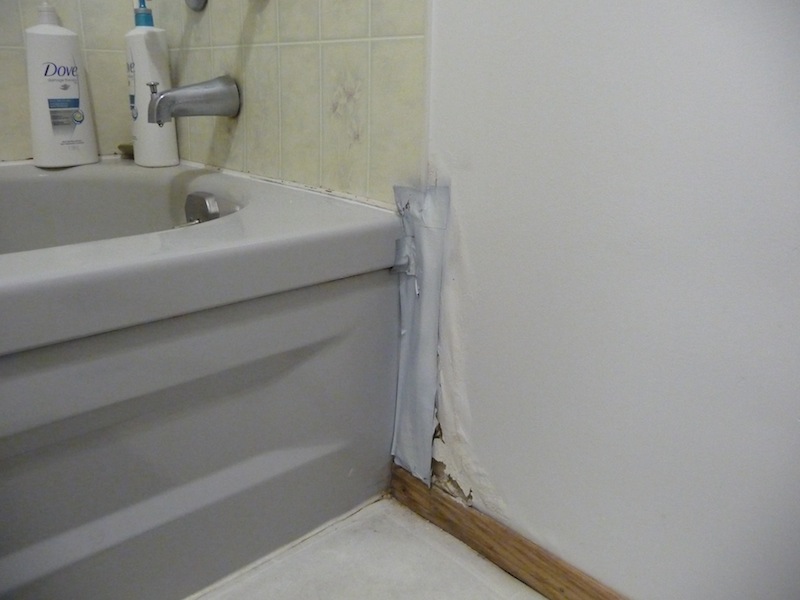Bathroom Water Damage - Ways To Prevent This Happening
Bathroom Water Damage - Ways To Prevent This Happening
Blog Article
How do you feel with regards to Looking for Signs of Water Damage in the Bathroom?

The restroom is incredibly at risk for wet build-up and possible water damage due to the constant use of water in it. This article supplies basic evaluation strategies to assist detecting water damages risks.
The frequent use water in the restroom makes it exceptionally prone for moist buildup as well as potential water damages. By inspecting it consistently, you can minimize water related problems.
The following collection of evaluations is very easy to carry out and also ought to be done as soon as in every three months in order to maintain your bathroom in good shape and also to prevent prospective water problems triggered by the bath tub, the shower, pipe joints as well as plumbing, sinks, closets, and the bathroom
Do not forget performing these assessments and also be comprehensive while doing them. Remember that these simple evaluations can conserve you a great deal of money by supplying very early indications for water damage
Sinks as well as Cabinets
Sinks and also cabinets are exposed to wetness and also humidity daily as well as are commonly forgotten. Evaluate routinely under the sink as well as on the counter top over it. Fix any drip in the trap as it might suggest drain issues. Browse the sink, slow-moving draining pipelines may indicate a blocked drain. Change sink seals if they are split or loosened.
Bath tub and Shower
The shower and bathtub need special interest and also upkeep. Examine the floor tiles and replace if cracked. Ensure that there is no missing grout between the tiles. Examine as well as replace broken caulking at joints where the wall surfaces satisfy the flooring or the tub. Blocked drains as well as pipes issues will avoid the tub from drying as well as may suggest major issues below the bathtub. Speak with a professional instantly to prevent structural damage. Pay attention to discolorations or soft locations around the tub walls as they may show an inner leak.
Plumbing
Signs for water damages are difficult to discover because most pipelines are set up inside the walls.
Pay special focus to floor covering and wall surfaces dampness as well as stains as they might suggest an invisible plumbing trouble. Inspect moisture degrees in adjoining rooms too.
The Bathroom
The toilet is an at risk water junction. Check the water lines and also search for leaks around the commode seat, in the hose pipe, and under the water storage tank. If you spot any indicators of moisture on the flooring around the bathroom, check for leakages in the toilet rim and also storage tank seals.
Be aware that hanging commode bowl antiperspirants enhances the chances for blockages.
TIPS TO PREVENT WATER DAMAGE IN THE BATHROOM
The average household uses approximately 80-100 gallons of water per person per day. For a family of 4, that's almost 2,500 gallons of water a week! The largest portion of this consumption comes from bathroom use. Flushing the toilet uses the most water, followed by taking a shower or bath. With that much water running through the home, water damage in the bathroom is bound to happen. Knowing how to spot signs of a water leak is essential to preventing long-term damage. This guide provides you with tips to reduce the impact of water damage on your bathroom.
CAUSES OF BATHROOM WATER DAMAGE
Pipe breaks are the most common cause of water damage we see in our daily jobs. The age of a pipe plays a large role in a pipe break as well as corrosion. Over time, the metal begins to break down, allowing water to escape. Frozen pipe breaks are also a concern in the winter months. Toilet overflows caused by paper products or children flushing inappropriate items. Degraded caulking around the toilet or bathtub can allow water seepage, sometimes behind the fixture, into the subfloor or walls. Condensation forms when the water in a pipe is cooler than the air temperature. Beads of water form on the exterior of the pipes, sometimes so much so that the water begins to drip and pool below. Sink or shower backups created by poor drainage. HOW TO PREVENT WATER DAMAGE IN YOUR BATHROOM
Inspect your toilet supply line for worn or frayed hoses and replace them as needed. Winterize your plumbing to prevent a frozen pipe break. Use vent fans to prevent condensation that can lead to mold growth. Routinely check and replace degraded caulking around your toilet or bathtub. Increase the temperature in your toilet tank and insulate your pipes during the warm summer months to keep condensation from forming. Use child safety locks on the toilets. Flush only toilet paper. "Flushable" wet wipes are actually not good for your plumbing system. Additionally, feminine hygiene products should not be flushed. Prevent water from escaping the tub or shower. Make sure shower curtains are in good condition. Inspect shower doors and replace the seal strip if necessary. Wipe up any water that accumulates on the floor and use bath mats. Water left to sit can cause damage to the tiles and flooring. Refrain from using bath products containing heavy oils to avoid a clogged drain.
Do you like reading up on How to Fix a Water Damage Bathroom? Put feedback below. We will be delighted to hear your reactions about this blog. In hopes to see you back again later on. Appreciated our article? Please share it. Help another person check it out. Many thanks for your time. Visit again soon.
Schedule Service Now Report this page